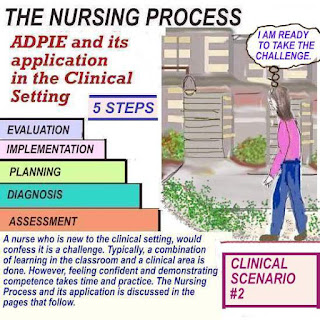ADDRESSING CONGESTIVE HEART FAILURE
The image above shows Mrs. R, is admitted to the CCU with
complaints of chest pain. Her past medical history includes
two heart attacks. She calls the nurse, as she is experiencing
two heart attacks. She calls the nurse, as she is experiencing
extreme shortness of breath.The nurse does an assessment,
checks vital signs and applies oxygen, she documents her
findings. ( See image)
checks vital signs and applies oxygen, she documents her
findings. ( See image)
The nurse notifies the doctor regarding Mrs.R's condition.
Following an examination, the doctor decides to run some
Following an examination, the doctor decides to run some
The cause of an anterior wall MI, is obstruction to the flow
of blood in the LAD (left anterior descending) artery. This
obstruction will result in death of the heart muscle surrounding
the blood vessel.
of blood in the LAD (left anterior descending) artery. This
obstruction will result in death of the heart muscle surrounding
the blood vessel.
Clinical picture of the patient in Congestive heart failure?

The patient in Congestive heart failure, will display signs of
anxiety, due to lack of oxygen. The damaged heart cannot pump
blood as efficiently as a healthy heart. Chest pain and shortness
of breath will likely be present. As a result of heart damage,fluid
backs up into the lungs.
blood as efficiently as a healthy heart. Chest pain and shortness
of breath will likely be present. As a result of heart damage,fluid
backs up into the lungs.
The patient who has an anterior wall myocardial infarction may
develop CHF. A higher level of care is usually needed. MD orders
will include : Assessment, continuous monitoring of the cardiac and
respiratory status, diuretics, drugs such as Digoxin, lab values and
more.
develop CHF. A higher level of care is usually needed. MD orders
will include : Assessment, continuous monitoring of the cardiac and
respiratory status, diuretics, drugs such as Digoxin, lab values and
more.
What is Anasarca?
Anasarca is generalised edema. Causes of anasarca include:
low albumin ( hypoalbuminemia), heart , renal or liver failure.
Treatment is directed at the cause.
Treatment is directed at the cause.
What does Hemodynamics mean?
Hemodynamics refers to blood flow. The heart is a pump,
which pumps blood around the body. If there is damage,
like a myocardial infarction, the heart's function will be
impaired.
Signs and symptoms include:
anxiety, chest pain and shortness of breath.
Signs and symptoms include:
anxiety, chest pain and shortness of breath.
trained staff members (advanced cardiac life support) are usually
on hand when a "code blue" is called.
on hand when a "code blue" is called.
Learn more , by clicking on the link below:





Comments
Post a Comment